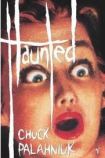I am devoting this week’s blog post to a subject that never ceases to fascinate us, namely banned books. Over the years countless famous books have been banned for a host of reasons. I suspect that not so long ago my satirical black comedy Necropolis would have raised the ire of the authorities.
In chronological order here are 10 famous books that have been banned:
The Metamorphosis by Franz Kafka (1915)

Gregor Samsa wakes up one morning to find that he has been transformed into a beetle. To compound matters Gregor’s family now see no use for him. Click here to read my review.
Why banned: Kafka’s books were banned in Czechoslovakia because he refused to write in Czech (Kafka wrote in German). The author’s works were also banned during the Nazi occupation and later by the communist regime.
Lady Chatterley’s Lover by D.H. Lawrence (1928)

Lady Chatterley’s Lover is a fictional account of an aristocrat’s clandestine love affair with the family gamekeeper. The book details their erotic meetings.
Why banned: Lady Chatterley’s Lover’s perceived pornographic content resulted in the original version being banned in the UK. Penguin published the book in its entirety when the decision was overturned in 1960.
The Grapes of Wrath by John Steinbeck (1939)

Set during the Great Depression, The Grapes of Wrath is about a poor family from Oklahoma, who trek to California to start a new life.
Why banned: This Pullitzer Prize winner was banned from many libraries in the US, and was even burned, due to peoples outrage at its controversial depiction of the poor.
Animal Farm by George Orwell (1945)

This dystopian novel about animals living on a farm is an allegory about the Russian Revolution and Stalinist rule in the Soviet Union.
Why banned: So controversial was the subject matter that the book was not published until more than a year after its completion. Animal Farm was banned in the Soviet bloc because of its political content.
The Catcher in the Rye by J.D. Salinger (1951)

Protagonist Holden Caulfield recounts his two day trip to New York following expulsion from his private school for fighting with his roommate.
Why banned: Between 1966 and 1975 the book was the most frequently banned book in schools due to its profanity, sexual references and the relentless negativity of its protagonist.
Lolita by Vladimir Nabokov (1955)

The story is about a man named Humbert Humbert, who falls in love with a twelve-year-old girl, Lolita, the daughter of his landlady. Click here to read my review.
Why banned: Citing the book’s controversial subject matter and perceived pornographic content, the UK Home Office confiscated all copies of the book in 1955. Lolita was banned in France the following year, but never in the US.
Slaughterhouse-Five by Kurt Vonnegut (1969)

The story follows the life of Billy Pilgrim, a married optometrist and a survivor of the notorious firebombing of Dresden in World War II. Click here to read my review.
Why banned: Slaughterhouse-Five’s anti-war rhetoric has resulted in it being banned from numerous US schools and libraries. It is one of the American Library Association’s 100 most frequently challenged books.
The Satanic Verses by Salman Rushdie (1988)

Having survived a plane crash, a Bollywood superstar has to rebuild his life, while the other survivor, an emigrant, finds his life in disarray.
Why banned: Many Muslims were offended by a number of allegedly pagan verses, which were included in the Qur’an, but later removed. It has been banned in Japan, Venezuela, and due to death threats, taken off the shelves of several US bookshops.
American Psycho by Bret Easton Ellis (1991)

The book is written from the perspective of a young Wall Street financier, Patrick Bateman. Patrick is an intelligent, well-educated, wealthy, good looking psychopath. Click here to read my review.
Why banned: American Psycho’s graphic violent and sexual content resulted in it being banned in Canada and Queensland (Australia). In the rest of Australia and New Zealand its sale remains restricted to those over eighteen.
Fight Club by Chuck Palahniuk (1996)

The book’s nameless narrator starts a fight club with charismatic anarchist Tyler Durden. Their fight club concept soon becomes very popular and spreads across the nation. Click here to read my review.
Why banned: Despite its violent content and anarchist philosophy, Fight Club was not widely banned. In 1999 the Chinese authorities prohibited the sale of the book due to it containing instructions on how to make explosives.
………………………………………………………………………………………………………………………..
I am the author of the satirical black comedy Necropolis.

Click here to sign up for my newsletter.
Like this:
Like Loading...













































